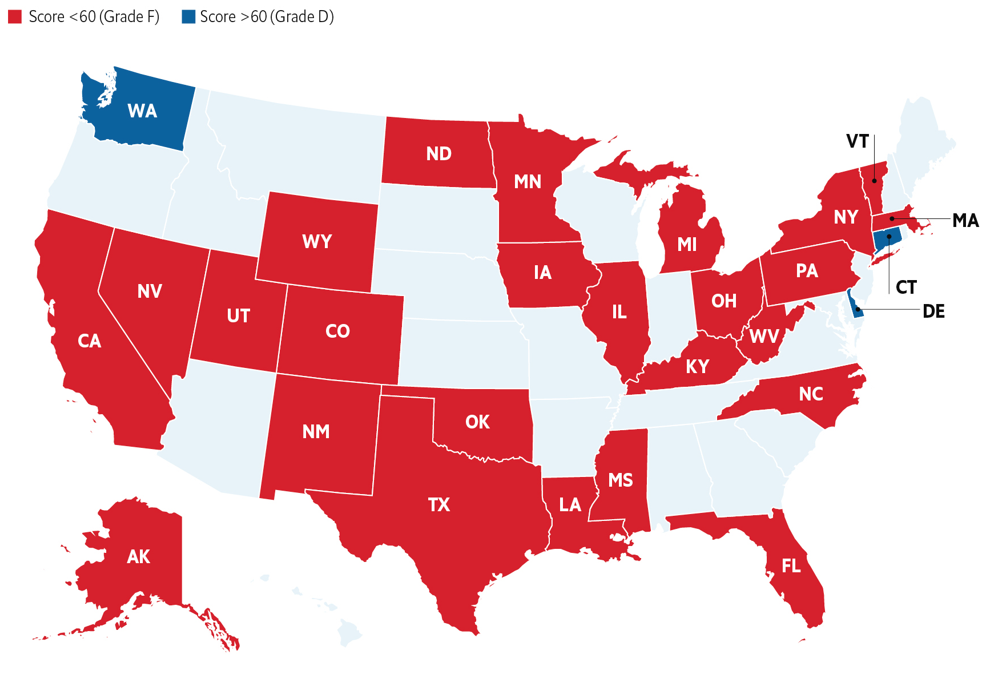Estimations of the scale, scope and cost of child sexual exploitation and abuse (CSEA) in the United States are startling. The Centers for Disease Control and Prevention reports that approximately one in four girls and one in 20 boys in the US will experience sexual abuse during childhood,1 while child protective services agencies reported 59,000 cases—or a new case every nine minutes—of child sexual abuse in 2021 alone.2
The individual impacts of CSEA are not the only cause for alarm: the average lifetime cost per victim of nonfatal child sexual abuse was estimated to be $282,734 million in 2015. In short, child sexual abuse may be costing the US upward of $9.3 billion dollars a year.3
Such numbers present both a social and economic imperative for swift action from governments to tackle this pressing issue. The good news is that CSEA is preventable: a range of interventions have been identified that can help prevent this type of violence from occurring in the first place, and minimise its impacts on survivors and their families when it does unfold.4
Economist Impact’s Out of the Shadows Index, supported by World Childhood Foundation USA, was designed to shine a spotlight on state action—and inaction—to address CSEA. The assessment includes more than 170 metrics to gauge the extent to which states have introduced essential measures to prevent and respond to this critical challenge. It aims to help state governments, advocates and practitioners more effectively identify gaps, develop solutions and benchmark progress. The research currently covers 28 states.
Key Findings Include
- Holistic action to address CSEA is lacking across the US. On average, the 28 states in the index score just 49 out of 100. If these scores were equated to academic grades, just three states—Connecticut, Delaware and Washington—would achieve above an F grade (see Figure 1).
Figure 1: Grading the response to CSEA

Source: Economist Impact
- The absence of comprehensive prevention strategies remains a significant challenge for almost all states. All 28 states have gaps in several key areas: no state has a plan or strategy to prevent online child sexual abuse or a statewide program to stop individuals who are having sexual thoughts about children from acting on them.
- Wealth is not the primary factor driving state action to address CSEA. Massachusetts and New York, the states in the index with the highest GDP per capita, rank 21st and 17th, respectively. Meanwhile, four of the states with the lowest GDP per capita (below $50,000 per annum based on 2021 data) come in above the national average, while two of these states— Vermont and Florida—are ranked in the top ten.
- States with more female lawmakers tend to have stronger CSEA prevention and response systems. States with a higher percentage of female lawmakers tend to score better on the index overall: six of the top ten states are among those with the highest percentages of women in their state legislatures. Colorado, Vermont and Washington—where women comprise at least 45% of the state legislature—rank eighth, seventh and first, respectively.
- Young people are not being provided with the necessary information to make informed decisions about their sexuality and reproductive health. Eleven of the 28 states do not require sex education in public schools, while just six require that information on consent be included in relevant courses. Only one state—Washington—requires that all students in public schools be provided with sex education that is medically accurate, evidence-based and culturally responsive, while six states—Florida, Louisiana, Mississippi, North Carolina, Oklahoma and Texas—have sex education requirements that explicitly discriminate against lesbian, gay, bisexual, transgender and queer (LGBTQ+) individuals.
- Key stakeholders lack training in identifying and preventing child sexual abuse and responding in a trauma-informed way. While 13 states mandate training for teachers and other school employees on the identification and prevention of child sexual abuse, just two—Texas and Vermont—have a similar mandate for daycare employees. Meanwhile, Washington is the only state that requires all three of the key response actors— child protective services investigators, law enforcement officers and prosecutors—to receive regular training on providing a trauma-informed response to child sexual abuse.
- Children’s Advocacy Centers (CACs) play a vital role in the response to CSEA; however, funding challenges continue to impede their operations. CACs are critical in providing a multidisciplinary and child-centred response during the treatment, investigation and prosecution of CSEA. Encouragingly, 24 of the 28 states provide CACs with some state funding support in the form of General Revenue or Special Revenue. Despite this, directors of CAC member organisations continue to cite resource constraints as one of the primary challenges to the provision of vital services to children and families.
Download our whitepaper to explore the key findings in more depth.
Download our most recent state profiles to learn more about the actions individual states are taking to address CSEA.
Download our methodology report for more details on the programme.
References
1 https://www.cdc.gov/violenceprevention/childsexualabuse/fastfact.html
2 This figure comes from Child Maltreatment 2021, the latest edition of the annual Child Maltreatment report series published by the Children’s Bureau of the U.S. Department of Health and Human Services. The 2021 statistics on child maltreatment are derived from data collected by child protective services agencies in 49 states and reported to National Child Abuse and Neglect Data System. See: https://www.acf.hhs.gov/cb/report/child-maltreatment-2021
3 $282,734 is the average lifetime cost for female victims of non-fatal child sexual abuse (CSA). For male victims, it is approximately $74,691 (although this lower estimate is likely influenced by the insufficient data available on productivity losses). The lifetime cost for victims of fatal CSA per female and male victim was estimated, on average, to be $1,128,334 and $1,482,933, respectively. All estimates pertain to the year 2015. See: https://pubmed.ncbi.nlm.nih.gov/29533869
4 https://www.togetherforgirls.org/en/resources/what-works-to-prevent-sexual-violence-against-children-evidence-review





